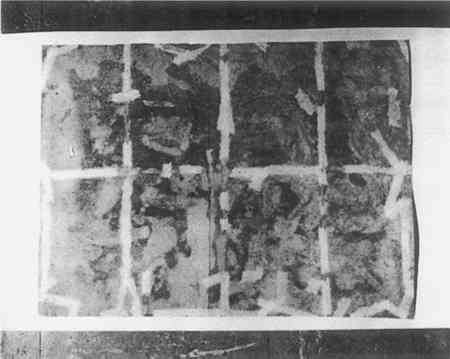THE CONSERVATION OF A SHENANDOAH VALLEY FRAKTURElizabeth C. Hollyday
5 INSERTSTo make inserts for the losses; a sheet of heavy Uda, Japanese mulberry paper, which had laid and chain lines similar to those in the fraktur, was dyed with raw umber watercolor and Tetley tea, giving it the approximate tone of the fraktur paper. The toned insert paper was placed beneath the fraktur, which was face up on a blotter, and with a dissecting needle the largest losses were prick ed into the toned paper from the front of the fraktur. The inserts, pulled from the toned mulberry paper, were the same shape as the losses, and contained fibers extending beyond the area of the losses they were to fill.11 The fraktur was now placed face down on a sheet of silicone release paper. With a small bristle brush, wheat starch paste was applied to the edges of the inserts which were placed into the losses from the reverse. A bone burnisher was used to press the inserts forward onto the same plane as the face of the fraktur. For the very minute losses, tiny pieces torn from the toned paper were coated with the paste, and were placed over the losses at the back of the support
|
